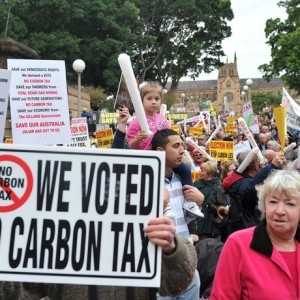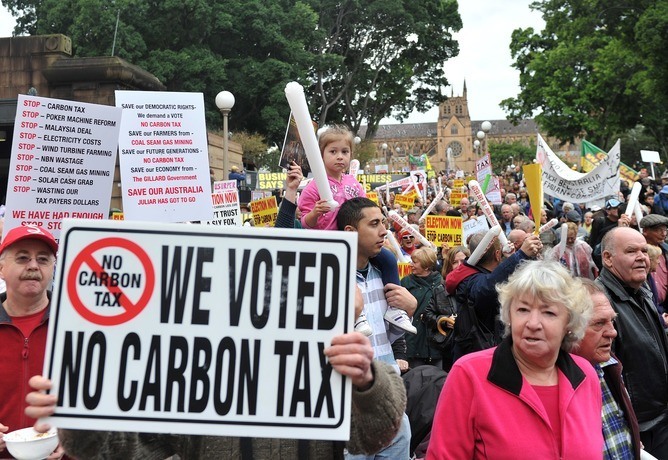Confusion continues on how the carbon tax will hit the electricity bills of Australian households.
While messages from electricity retailers may be on their way, Gujji Muthuswamy from Monash University’s Faculty of Business and Economics says this is the letter Prime Minister Julia Gillard should have sent to all Australians explaining – in plain English – how the carbon tax will affect the price of electricity.
Dear Australians,
Most of you would be aware that Australia has embarked on a major reform by putting a price on carbon. For the first three years, the price has been set by the Parliament starting at $23 per tonne of greenhouse gases emitted and increasing by 5% each year – this is referred to as the “carbon tax”.
Note that after 1 July 2015, the “carbon tax” will give way to a “carbon price” that is set by the market place and not by the Parliament.
While the carbon tax/price will be paid only by the top 300 or so businesses in the country, and not by householders or small businesses, much of the tax will be passed through to us – the end customers for goods and services in the form of increased prices, particularly for electricity.
In this letter, I will try to explain how electricity prices are set in Australia and how the carbon tax affects the prices that you pay.
Before the carbon tax was introduced, most residential customers were paying a total of about 20 to 28 cents per unit or so, depending on where they live.
But let me begin with a few words on how electricity is generated and delivered to your houses.
Three main stages are involved in this process.
The first step involves producing electricity from generator/turbine sets in huge power stations such as the ones in the La Trobe Valley, Hunter region, Snowy Mountains etc. About 80% of all electricity in Australia is generated from stations that burn coal to heat water and generate steam that drives the turbines. The other 20% comes from gas-fired power stations, hydro stations, wind and other renewable energy power stations.
Next, electricity is transported from various power stations via a vast electricity grid network of transmission towers, lines, transformers, street poles and wires to houses and businesses all over Australia. Just as roads are used to transport goods from factories and ports to consumers, electricity is transported from power stations to all households by the grid network.
The third stage is played by electricity retailers, who buy electricity from power stations in an open, competitive wholesale electricity market and pay a “transport fee” to the network operators, and bundle these up and make various offers to customers.
To use another analogy, these retailers are somewhat like your neighbourhood vegetable shop owners going to wholesale markets (such as the Victoria Market in Melbourne) early morning, buying fruit and veges in bulk, and selling to suburban retail customers. The rub here is that unlike vegetables, one cannot store electricity in large quantities; there is no viable technology. The amount that is consumed by all customers in Australia must be matched exactly by electricity generated in all of Australia every minute or so. Without going into details, this inability to store electricity in any large quantity is a major reason behind the complexities of electricity pricing.
Electricity generation costs
Coming back to costs, Australia can generate electricity cheaply in coal power stations because we have coal in abundance and about 7 to 10 cents per unit in your bill pays for generation costs. Unfortunately, this burning of coal releases carbon dioxide gas into the atmosphere, which most scientists in the world say causes climate change.
This is a very long term environmental issue, I mean 50 years or more, but we have to make a start now and work our way gradually over the next few decades to reduce our dependence on coal-based electricity and move towards more modern technologies and renewable energy. The longer we postpone this journey, the more difficult and more expensive it will be for our children and grandchildren.
Carbon tax was introduced with this aim in mind, so that power stations burning coal, gas or oil pay a tax and the resulting revenue is used to help develop modern technologies that don’t emit so much carbon dioxide. The effect of this carbon tax could probably add about 2.5 cents per unit or so to the current wholesale market prices. Note that this increase is more or less the same for all customers.
Network costs
The electricity grid in eastern Australia stretches all the way from Cape York to South Australia and Tasmania, different parts of which are owned and operated by either state-owned or private enterprises. A separate grid operates in Western Australia.
Given the vastness of land covered and the low population density outside major cities, the cost of transporting electricity is higher than generation costs. As our metropolitan and regional cities spread outwards, as our population increases, as mining activities increase, as more and more of us use plasma TV, air conditioners and other appliances, the peak demand for electricity goes up.
Though these peak demands may last only a few days in the year, for example heavy use of air conditioners on hot February days, the grid capacity must be built to withstand these peak pressures, even if much of these equipment are under-used during non-peak demand times. This means more capital works programs and more costs by network businesses which are passed on to customers as the network charge component of the bill. The “tyranny of distance” means that regional and rural networks incur more such costs per customer served than those operating in cities.
The cost of network charges is set by the Australian Energy Regulator (AER) based on detailed analyses of the various networks’ forecasts of load, capital and on-going costs. Until recently, these were set by state-based energy regulators. The cost of the regulated network charges has been going up markedly in recent years, much more than generation costs for all the reasons mentioned above.
But the point to note is that carbon tax does not affect network businesses as they mainly transport electricity, and do not generate electricity themselves by burning coal etc.
Thus the components of electricity prices paid by the customer (using a hypothetical case) may look like this:
| Components of electricity price | Before carbon tax | After carbon tax of $23/Tonne |
|---|---|---|
| Generation costs (cents per unit) | 10 | 12.5 |
| Network costs (cents per unit) | 13 | Little change (13) |
| Retail and other costs (cents per unit) | 3 | Little change (3) |
| Total paid by customer (cents per unit) | 26 | 28.5 |
The total retail price in this example is likely go up by about 10% or so due to the introduction of the carbon tax.
Hope this clarifies the picture somewhat. Please do talk to your retailer if you want to further understand the exact implications of carbon tax/price for your specific account.
Yours sincerely
Australian government
Original Article – http://theconversation.edu.au/

